Blue Ocean Strategy
description: a business strategy that encourages companies to create new market spaces rather than competing in existing industries
26 results
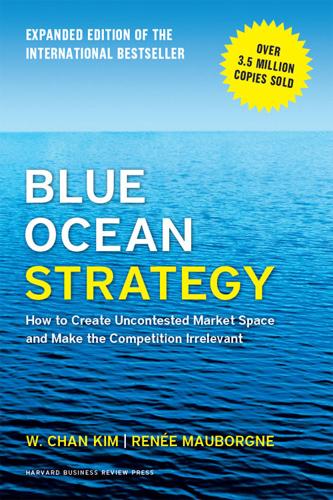
Blue Ocean Strategy, Expanded Edition: How to Create Uncontested Market Space and Make the Competition Irrelevant
by
W. Chan Kim
and
Renée A. Mauborgne
Published 20 Jan 2014
And yet other articles detail how government leaders have applied blue ocean strategy to achieve high impact at low cost with rapid execution in areas of social importance ranging from enhancing the quality of rural and urban lives, to strengthening internal and external securities, to breaking down ministerial and regional silos.1 As we have reached out to organizations that have applied the ideas and have worked with many directly since the publication of the original edition of Blue Ocean Strategy, we have learned a lot by watching the journey people have made with these ideas. Their most pressing questions in executing their blue ocean strategies are: How do we align all of our activities around our blue ocean strategy? What do we do when our blue ocean has become red? How can we avoid the strong gravitational pulls of “red ocean thinking”—we call them “red ocean traps”—even as we’re pursuing a blue ocean strategy? These are the very questions that have motivated this expanded edition. In this new preface, we first outline what’s new here.
…
Having passed the blue ocean idea index, companies are ready to shift gears from the formulation side of blue ocean strategy to its execution. The question is, How do you bring an organization with you to execute this strategy, even though it often represents a significant departure from the past? This brings us to the second part of this book, and the fifth principle of blue ocean strategy: overcoming key organizational hurdles, the subject of our next chapter. PART THREE Executing Blue Ocean Strategy CHAPTER 7 Overcome Key Organizational Hurdles ONCE A COMPANY HAS DEVELOPED a blue ocean strategy with a profitable business model, it must execute it.
…
Moreover, because imitation often requires companies to make substantial changes to their existing business practices, organizational politics often kick in, delaying for years a company’s commitment to imitate a blue ocean strategy. When Southwest Airlines, for example, created a service that offered the speed of air travel with the cost and flexibility of driving, imitating this blue ocean strategy would have meant major revisions in routing planes, retraining staff, and changing marketing and pricing, not to mention culture—significant organizational changes that the politics of few companies can bear in the short term. The brand barrier. Brand image conflict prevents companies from imitating a blue ocean strategy. The blue ocean strategy of The Body Shop, for example—which shunned beautiful models, promises of eternal beauty and youth, and expensive packaging—left major cosmetic houses the world over actionless for years because imitation would signal an invalidation of their current business models.

Think Like an Engineer: Use Systematic Thinking to Solve Everyday Challenges & Unlock the Inherent Values in Them
by
Mushtak Al-Atabi
Published 26 Aug 2014
Glasses and Contact Lenses (Source: Wiki Commons) Try to think of washing machines without water and a car without wheels and see how this can this lead to innovative new products. 4.2.4 Blue Ocean Strategy W. Chan Kim and Renée Mauborgne of INSEAD developed the concept of the Blue Ocean Strategy, which refers to the development of new markets and new competitive advantages. In their book ‘Blue Ocean Strategy’, they discussed how businesses and organisations can make the competition irrelevant by creating new markets and moving away from the highly contested traditional value propositions, or what they termed “Red Ocean.”
…
Cirque du Soleil is a Canadian circus founded in 1984 that responded to the challenges it was facing with Blue Ocean Strategy thinking. The circus wanted to reinvent the experience of its customers and provide them with a differentiated value by rebranding its shows and pricing them closer to the prices of a musical or theatre, which well beyond what customers are used to pay for a circus ticket. To achieve this, customers would expect a more refined and sophisticated entertainment experience. Blue Ocean Strategy Canvas for Cirque du Soleil The circus management decide to Eliminate animal shows, the use of star performers, multiple show arenas as well as the sale of food and drinks in the aisles of the circus.
…
To cement its position as a competitor to the theatre and musical shows, the circus Created a refined viewing environment and multiple productions. The Strategy Canvas for Cirque du Soleil is shown above. This Blue Ocean Strategy thinking yielded very good results and while other circuses are closing down, Cirque du Soleil is thriving. The unique offering of Cirque du Soleil can be seen by having a look at its website at: http://www.cirquedusoleil.com/en/home/shows.aspx Cirque du Soleil’s Website Now, as an exercise, try using the Blue Ocean Strategy to improve the domestic refrigerator and the process of applying for a credit card. 4.2.5 Trend Recognition Innovation is driving technology to be better, faster, lighter, smaller, easier to use and cheaper.
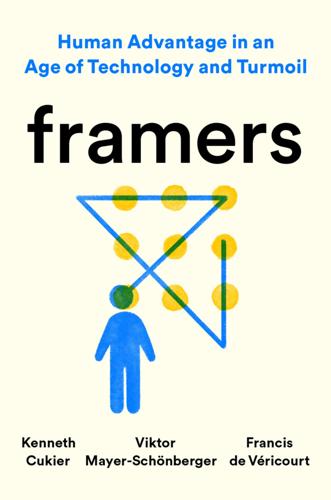
Framers: Human Advantage in an Age of Technology and Turmoil
by
Kenneth Cukier
,
Viktor Mayer-Schönberger
and
Francis de Véricourt
Published 10 May 2021
That’s how precise frames can be in describing what is not yet observable. Seeing what isn’t there works in other domains as well. In management, the so-called Blue Ocean Strategy identifies unexplored market spaces—akin to being alone at sea—that companies ought to tap into. It carefully harnesses the qualities of human framing to help managers visualize commercial voids and come up with options and alternatives on markets and products. Conceived by two professors, W. Chan Kim and Renée Mauborgne, who teach at INSEAD business school, Blue Ocean Strategy has proven useful. The Japanese video game company Nintendo employed it to identify the empty market spaces and products that would become the successful Nintendo DS and Wii.
…
On the Higgs boson: Sabine Hossenfelder, “The Uncertain Future of Particle Physics,” New York Times, January 23, 2019, https://www.nytimes.com/2019/01/23/opinion/particle-physics-large-hadron-collider.html. On black holes, see: Jonathan Amos, “Dancing Gargantuan Black Holes Perform on Cue,” BBC News, April 29, 2020, https://www.bbc.com/news/science-environment-52464250. On Blue Ocean Strategy: W. Chan Kim and Renée Mauborgne, Blue Ocean Strategy: How to Create Uncontested Market Space and Make the Competition Irrelevant, expanded ed. (Boston: Harvard Business Review Press, 2015). On the Wright brothers: See: Johnson-Laird, How We Reason; David McCullough, The Wright Brothers (New York: Simon & Schuster, 2015).
…
Abaaoud, Abdelhamid, 213–214 abstraction and generalization causality and, 53–54 as defining characteristics of human cognition, 211 mental models made from ability of, 54–55, 59 as necessary for ambition and transcendence, 55 pattern recognition and, 56 relationship between, 64 accountability, 64, 65–66 Adair, John, 46 Adichie, Chimamanda Ngozi, 84 agency causality and, 65 counterfactuals and, 91 explainability as foundation of, 64 framing as empowering, 27 framing as ideal for efficiently preparing for, 208–209 mental models and, 9 mutability and, 107 number of constraints and, 118, 141 privileging human inaction and, 110 responsibility and, 65–66 social structures and, 66 agility of mind, 215–218 airplanes, development of, 36–38 All Quiet on the Western Front (Remarque), 83–84 AlphaZero system, 17–18 alternative realities constraints and shaping, 100–103 contradictions in, 110–111 counterfactuals and, 12–13, 79, 82–86, 94 envisioning, and shaping future, 94–95 existence of more than one, 159 framing and envisioning, 9, 79, 90, 94 minimal-change principle and, 108 monocultures and, 186 Amazon business model, 133–134 ambition and abstraction and generalization, 55 Americanah (Adichie), 84 Ansari, Anousheh, 194 antibiotics, ineffectiveness of, 1–2 Apple framing by teams at, 164–165 inspiration for computer system, 159 leadership of, ability to frame differently, 149, 150–151 Nokia versus, 6–7 Ardern, Jacinda, 32 Arendt, Hannah, 173–174, 180–181, 197, 198 Aristotle, 84–85 Armstrong, Neil, 34 artificial intelligence (AI) cannot conjure constraints, 118 e-sports, 69–70 failure to see causality, 45 generated music, 118–119 human element in, 93, 211 hyper-rationalists’ reliance on, to solve problems, 15–16 inability of, to frame, 44, 45–46 lack of imagination, 119 as reinforcing significance of framing, 211 self-driving cars, 92–93 arts AI-generated music, 118–119 business model for music industry, 120 constraints and, 100–103, 111–113 as constructed counterfactual realities, 82–85 imagination and, 82–85 mental models and, 11 Austrian wine industry, 108–109 Bach, Johann Sebastian, 118–119 Barzilay, Regina, 2–3, 4–5, 19, 211 Bay of Pigs invasion, 89, 234 Bernanke, Ben “Helicopter Ben,” 49–51, 101 Bezos, Jeff, 134 Black-Scholes theory, 39–40 Blue Ocean Strategy, 35 Branscomb, Lewis, 161 Brin, Sergey, 194 Bronner, Gérald, 213, 214 Brunelleschi, Filippo, 11 Burt, Ronald, 157 Bush, George W., 49 business and management Amazon, 133–134 benefits of mental diversity within, 161–166, 241–242 case study method of education, 86, 87–88, 155 difficulties changing corporate culture, 170–171 mental models and, 35 monocultures and death of, 182–183 music industry model, 120 reform of traditional pedagogical method in schools, 149–150 Silicon Valley versus East Coast technology titans, 183, 185–186 “thinking outside the box,” 46 Byrne, Ruth, 90, 110 Camden, New Jersey, police force, 134–136 Cappelli, Louis, Jr., 135 carbon dioxide and climate, 74–76, 168 “carbon sinks,” 76 Carcraft, 93 Carter, Jimmy, 116 Cassandras, 167–168 Cassirer, Ernst, 25 Catmull, Ed, 167–168 “causal determinism,” 88–89 causality ability to abstract from direct observation and, 53–54 agency and, 65 AI’s failure to see, 45 children and, 80–82 coincidence and, 66–67 correlation and, 68 counterfactuals and, 77, 79, 90 enables comprehension and explainability of reality, 52, 60 as foundation of human cognition, 12 in framing, 88–90 input of humans needed for technology to outperform humans, 70 needed for application of mental models, 62 predictability with, 52 reactions resulting from, 53 as result of being part of society, 58 scientific methodology prevents wrong inferences made from, 12 skepticism about, 68 statisticians and, 68 ultra-emotionalists and, 68–69 causal reasoning, 55 Cerf, Bennett, 101–102 Charging Bull statue, 198–199 Charpentier, Emmanuelle, 137 Chollet, François, 211 Churchill, Winston, 41 “Circumstances Affecting the Heat of the Sun’s Rays” (Foote), 73–74 clean-slate strategy, 158–160, 241 climate and carbon dioxide, 74–76, 168 Coconet, 118–119 cognitive complexity, 161 “cognitive effort,” 110 “cognitive foraging,” 156–158, 160 cognitive niche, 57, 58, 59, 230 “Cognitive Wheels” (Dennett), 44–45 coincidence and causality, 66–67 Collins, Jim, 2–3 Collison, Patrick, 185 Computers as Theatre (Laurel), 85 consistency principle, 110–114 constraints agency and number of, 118, 141 application method, 120–121 application of too many, 45 as boundaries on alternative realities, 100–103 changing, 201–202 consistency of, 104, 110–114 current reality as impacted by, 117–118 enable identification of viable options, 117 goal of, 114 hard, described, 104 imagination and, 47, 220 importance to counterfactuals of, 13, 115 increase agency, 118 as liberating, 100–103 minimal, 104 minimal-change principle and, 108–110 mutability of, 104–107, 110 space exploration and, 105 technology cannot conjure, 118 control, 64, 65–66 Cook, Tim, 151 Cooper, Sarah, 201–202 correlation and causality, 68 counterfactuals agency and, 91 alternative realities and, 12–13, 79, 82–86, 94 causality and, 77, 79, 90 causal link between carbon dioxide and climate and, 74–75 children and, 80–82 cognitive homogeneity as death of, 207 as counterbalance to “causal determinism,” 88–89 as crucial to progress by enabling what-if questions, 12–13 described, 12 in education, 86–88 finding relevant, 45 focused and goal-oriented nature of, 76 as form of evolution, 93–94 functionality of, 94 imagination and, 76, 79, 90 implicit knowledge and, 90–91 literature and art, 82–85 minimal-change principle and, 109–110 mutable constraints and, 106 omitting versus adding mutable action and, 110 thinking in, as natural for humans, 77 Coupland, Douglas, 112 Covid-19, framing of, 31–33 Craik, Kenneth, 226 creativity.
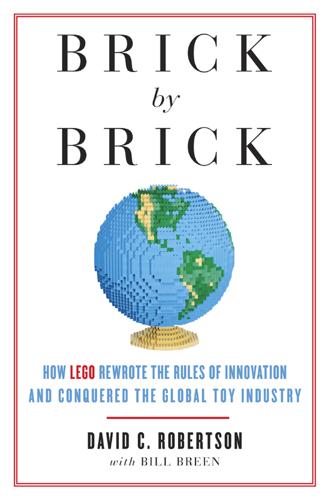
Brick by Brick: How LEGO Rewrote the Rules of Innovation and Conquered the Global Toy Industry
by
David Robertson
and
Bill Breen
Published 24 Jun 2013
Of all the diverse, wide-ranging ideas to come out of the company’s new cast of creatives, Explore would prove to be one of the most daring, un-LEGO-like lines that LEGO had ever imagined. Head for blue-ocean markets. For more than a decade, business thinkers such as W. Chan Kim and Renée Mauborgne, the authors of Blue Ocean Strategy, have exhorted companies to push beyond the tactic of making incremental improvements to existing products and instead swim for the open water of untapped market spaces. If red oceans are the crowded, bloodied waters where companies chew each other up for smaller and smaller chunks of market share, blue oceans are vast markets, unsullied by cutthroat competition, where outsize profits await.
…
Taken together, the awkwardly titled LEGO & Steven Spielberg MovieMaker set (see insert photo 4) gave kids the ability to make movies that captured the play scenes they’d been acting out in their heads. “There was nothing out there where kids could build their own model and make a movie out of it,” asserted John Sahlertz, who led the MovieMaker development team. “It was a completely new category for toys.” In a clever twist on blue-ocean strategy, LEGO aimed not only to stake out uncontested market space with the Spielberg kits but also to entice kids to clamor for more traditional sets such as LEGO Pirates, by using the camera and software from the Spielberg set to make piratethemed movies. Thus, Spielberg MovieMaker would catalyze sales for LEGO Pirates and other classic lines.
…
And with such core capabilities as its tight relationships with retailers, its direct dialogue with fans, and its varied approach to reimagining profitable product lines, LEGO tore away market share from the industry’s whales, Mattel and Hasbro, more than tripling its share of the market between 2004 and 2011.* LEGO also understood a fundamental principle of blue-ocean strategy: no unsullied market space remains uncontested for long. The more quickly a break-the-mold product grows, the sooner it fulfills the promise of its original business model and loses its novelty. The result is that a dynamically different product such as LEGO Games eventually becomes less of an innovation and more of a commodity.
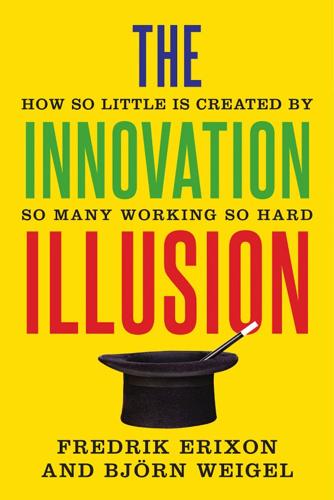
The Innovation Illusion: How So Little Is Created by So Many Working So Hard
by
Fredrik Erixon
and
Bjorn Weigel
Published 3 Oct 2016
Strategy is not used for something new, nor is it a tool to manage the unforeseen and the unknown. What overwhelms managerialists and makes them disinclined to strategize for something new is that the concept travels beyond the confined and controllable habitat of risks and operational improvement. Kim and Mauborgne touched upon this issue in their celebrated book Blue Ocean Strategy.56 Strategy, they argue, cannot be about pushing for gains in a confined market space with inherent and fixed competition (red ocean), but is about creating a new space in the market grid that does not exist today and thus harbors no competitors (blue ocean). This is a philosophy for building new markets, not competing within old ones.
…
22. 49.Rogers and Blenko, “The High-Performance Organization.” 50.Morieux, “Smart Rules.” 51.Morieux, “Smart Rules,” 3. 52.Buchanan, “You Stab My Back, I’ll Stab Yours,” 58–9. 53.The Economist, “Guru: Igor Ansoff.” 54.Mintzberg and Lampel, “Reflecting on the Strategy Process.” 55.Perhaps Henry Ford did not put it exactly like that, but it is an indicative view of innovation. See Vlaskovits, “Henry Ford, Innovation, and That ‘Faster Horse’ Quote.” 56.Kim and Mauborgne, Blue Ocean Strategy. 57.Thiel with Masters, Zero to One. 58.Millman and Rubenfeld, “Compliance Officer: Dream Career?” 59.Taibbi, “Why Isn’t Wall Street in Jail?” 60.European Commission, “Progress of Financial Reforms.” 61.Hayek, “The Use of Knowledge in Society”; Hayek, “The Pretence of Knowledge.” 62.Millman and Rubenfeld, “Compliance Officer: Dream Career?”
…
currentPage=all. Kelly, Thomas, “Sunk Costs, Rationality, and Acting for the Sake of the Past.” Noûs, 38.1 (2004): 60–85. Keynes, John Maynard, “Economic Possibilities for Our Grandchildren” (1930). In John Maynard Keynes, Essays in Persuasion. Norton, 1963. Kim, W. Chan, and Renée Mauborgne, Blue Ocean Strategy. Harvard Business School Press, 2005. Klein, Naomi, No Logo. Fourth Estate, 2010. Kleiner, Morris M., “Reforming Occupational Licensing Policies.” Hamilton Project Discussion Paper 2015-1. Brookings, Mar. 2015. At http://www.brookings.edu/~/media/research/files/papers/2015/03/11-hamilton-project-expanding-jobs/thp_kleinerdiscpaper_final.pdf.

New World, Inc.
by
John Butman
Published 20 Mar 2018
Anno 1553,” in Hakluyt, Principal Navigations, 2:212–14. 2 “The copie of the letters missive,” in Hakluyt, Principal Navigations, 2:211 (“divers languages”); 209 (“all kings”). 3 Ibid., 210. 4 Ibid., 211. 5 In 2005, two professors from INSEAD business school in France wrote an influential book on what they called “blue ocean” strategy—succeeding by creating “blue oceans” of uncontested market space: W. Chan Kim and Renee Mauborgne, Blue Ocean Strategy: How to Create Uncontested Market Space and Make the Competition Irrelevant (Boston: Harvard Business School Press, 2005). 6 “The true copie of a note… Sir Hugh Willoughby,” in Hakluyt, Principal Navigations, 2:212–14. 7 The blue color was derived from local whortleberries (http://www.watchetmuseum.co.uk/social-history/). 8 Adams, “The newe Navigation,” in Hakluyt, Principal Navigations, 2:244. 9 Ibid., 2:245. 10 Ibid., 2:245. 11 “The true copie of a note… Sir Hugh Willoughby,” in Hakluyt, Principal Navigations, 2:220. 12 Adams, “The newe Navigation,” in Hakluyt, Principal Navigations, 2:247. 13 Mildred Wretts-Smith, “The English in Russia During the Second Half of the Sixteenth Century,” Transactions of the Royal Historical Society 3 (1920), 72–102; 90–91, n6. 14 “The first voyage made by Master Anthonie Jenkinson, from the Citie of London toward the land of Russia, begun the twelfth of May, in the yeere 1557,” in Hakluyt, Principal Navigations, 2:413–26; 416. 15 Kit Mayers, North-East Passage to Muscovy: Stephen Borough and the First Tudor Explorations (Phoenix Mill: Sutton Publishing, 2005), 65 (map). 16 “The true copie of a note… Sir Hugh Willoughby,” in Hakluyt, Principal Navigations, 2:221. 17 Ibid., 223. 18 “Ordinances… Sebastian Cabota,” in Hakluyt, Principal Navigations, 2:202. 19 Adams, “The newe Navigation,” in Hakluyt, Principal Navigations, 2:243 (“home quietly”); 247 (“die the death”); 248 (“held his course”). 20 Ibid., 2:248. 21 Ibid., 2:249. 22 Adams, “The newe Navigation,” in Hakluyt, Principal Navigations, 2:250 (“wares and commodities”); 251 (“loving manner”); 254 (“bignesse,” “London”); 255 (“cloth of gold,” “chamber of presence,” “throne,” “precious stones,” “out of countenance”). 23 Stephane Mund, “The Discovery of Muscovite Russia in Tudor England,” Revue Belge de Philologie et d’Histoire 86, no. 2 (2008): 351–73; 351n3. 24 Geoffrey Hosking, Russia and the Russians from the Earliest Times to the Present (London: Penguin Books, rev. ed., 2012), 84, 89, 117, 120. 25 “The copie of the Duke of Moscovie and Emperour of Russia his letters, sent to King Edward the sixt, by the hands of Richard Chancelour,” in Hakluyt, Principal Navigations, 2:272. 26 Letters Patent for the Limitation of the Crown, 21 June 1553: Harleian MSS, 35, fol. 364, in John Gough Nichols, ed., The Chronicle of Queen Jane and of Two Years of Queen Mary and Especially of the Rebellion of Sir Thomas Wyat, Written by a Resident in the Tower of London (London: Camden Society, 1850), 91–100. 27 Hubert Hall, History of the Custom-Revenue in England from the Earliest Times to the Year 1827, 2 vols.
…
If all went well, they would scud through the northeast seaway, skirt the territory marked on Cabot’s map as Terra Incognita—unknown land—and reach the hoped-for outlet into the China Sea. From there they would navigate, somehow, to Cathay and the markets of the East, where they would trade English cloth for spices and silks or whatever could be had—and then do it all in reverse. This was a bold “blue ocean” strategy of the most literal kind.5 To execute on the plan, Willoughby and Chancellor had assembled a crew of 116 men—sailors, of course, as well as cooks, carpenters, coopers, gunners, surgeons, and a minister. Also aboard was a large contingent of merchants—eighteen of them—who were to be the first English commercial travelers to crack the new overseas markets.6 At Ratcliffe, to see them off, was Sebastian Cabot.
…
London: George Allen and Unwin, 1968. . Edward VI: The Threshold of Power. The Dominance of the Duke of Northumberland. London: George Allen & Unwin, 1970. Kelsey, Harry. Sir Francis Drake. The Queen’s Pirate. New Haven, CT: Yale University Press, 1998. Kim, W. Chan, and Renee Mauborgne, Blue Ocean Strategy: How to Create Uncontested Market Space and Make the Competition Irrelevant. Boston: Harvard Business School Press, 2005. Kupperman, Karen Ordahl, The Jamestown Project. Cambridge, MA: The Belknap Press of Harvard University Press, 2007. Lacey, Robert. Sir Walter Ralegh. London: Weidenfeld & Nicholson, 1973; paperback ed., 1975.
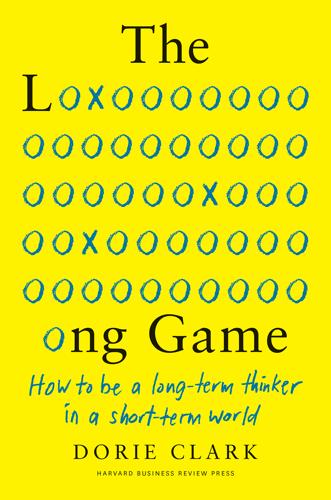
Long Game: How Long-Term Thinker Shorthb
by
Dorie Clark
Published 14 Oct 2021
I’d already bought my plane ticket to London to attend Thinkers50, the biennial conclave of the world’s top business thinkers—the one that Nihar Chhaya attended and wrote about for Forbes. Previously I’d been a Thinkers50 “thinker to watch,” but that wouldn’t necessarily translate into making it onto the coveted list. The people on that list were business giants, like W. Chan Kim and Renée Mauborgne, whose seminal book Blue Ocean Strategy has sold four million copies. On a chilly Monday evening, I found myself in a cavernous banquet hall with a sea of tuxes and ball gowns surrounding me. The evening’s program started, and a list of names flashed on the screen. Mine was on it. That evening, six weeks before year’s end, I was named one of the top 50 business thinkers in the world.
…
See also networks and networking Allen, David, 29–30 Alphabet, 77, 78, 80 Atlassian Group, 21 attention focusing, 25 setting goals based on, 59–61 Baldursdottir, Sigrun, 152 barter, 121–122 Bellezza, Silvia, 22–23 Bezos, Jeff, 196, 199–200 bicycling advocacy, 101 Biden, Joe, 145 Birsel, Ayse, 110, 111 Blank, Steve, 180–181 Blue Ocean Strategy (Kim & Mauborgne), 179 Blumenthal, Sidney, 176 BMI Workshop, 82, 88, 175, 192–193 Bold (Diamandis & Kotler), 165–166 Boston Phoenix (newspaper), 176 Braiker, Zach, 86–88 Brass Ring Daily/Brass Ring Summit, 103–104 Brill, Jonathan, 7, 78, 79–80, 90 Brin, Sergey, 74–75 Broadway musicals, 65, 74 learning to write, 81–82, 88, 91–92, 174–176, 192–193 time to reach Broadway for, 91 Burkus, David, 169–170 busyness, 21–30 as anesthetic, 23–25 changing perspectives on, 26–27 hidden benefits of, 22–25 magical thinking about, 28 planning around your priorities and, 27–30 saying no and, 31–49 as servitude, 26 calendars, 29 Cantergiani, Kim, 188–189 Career Waves, 100–112 connecting, 100, 105–108 creating, 100, 103–105 learning, 100, 101–103 reaping, 108–112 Carnegie Hall, 70–71 Carucci, Ron, 159–161, 168, 171 CD Baby, 26, 166–167 character, 209–210 checklists, 44–48 Chhaya, Nihar, 118–119 Chicago Marathon, 67–69 choices deciding what to be bad at, 39–41 saying no and, 14, 26–27, 31–49 self-assessment on, 96 thinking in waves and, 100–112 willingness to make, 11, 29 client relationships, 140–141 Clinton, Bill, 96 coaches and coaching, 86–88, 200–201 career, 106–107 Goldsmith and, 110–112 Cohn, Alisa, 65–66, 92, 131 Cole, Christiana, 88 Collins, Jim, 102 Commerce Bank, 40–41 commitment deadlines and, 187–188 evaluating opportunities based on, 44–45 to networks, 139–140 community involvement, 188–190 comparisons, 3, 10, 161–162, 168, 191–193 realistic, 169–170 connecting, 105–108.
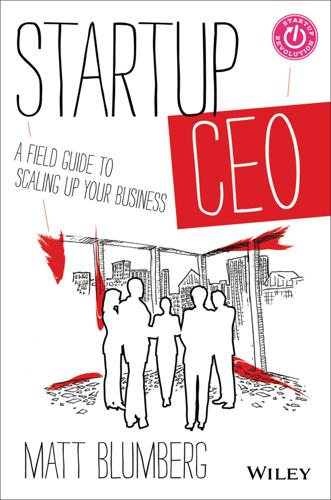
Startup CEO: A Field Guide to Scaling Up Your Business, + Website
by
Matt Blumberg
Published 13 Aug 2013
My favorites are: Profitable Growth Is Everyone’s Business by Ram Charan The Innovator’s Dilemma, The Innovator’s Solution, and Seeing What’s Next by Clay Christensen Good to Great and Built to Last by Jim Collins Purple Cow and others by Seth Godin The Advantage by Patrick Lencioni The Goal and It’s Not Luck by Eliyahu M. Goldratt Blue Ocean Strategy by Chan Kim and Renee Mauborgne Crossing the Chasm, Inside the Tornado, and Escape Velocity by Geoffrey Moore The Underdog Advantage by David Morey and Scott Miller Competitive Strategy and Competitive Advantage by Michael Porter Positioning: The Battle for Your Mind by Al Ries and Jack Trout Hardball by George Stalk and Rob Lachenauer (also check out “Curveball,” Stalk’s 2006 follow-up article in the Harvard Business Review) INVESTOR PRESENTATIONS FOR LARGER STARTUPS Unless you invent not only cold fusion but a model that funds your business without requiring outside capital, you’ll go through the process described in this chapter a number of times as you scale up your business.
…
Consolidating The most common opportunity you’ll encounter is an opportunity to consolidate. Startups often create new marketplaces or industries, or enter ones that are immature. Ideally, you’ll want your startup to be a market leader in the industry that you’re creating. (By the way: that’s the Blue Ocean Strategy in a nutshell.) If you’re the first to market, you’ll be a market leader by default—if only temporarily. Eventually, competitors will come along. Competition can’t be eliminated—usually. There are two occasions when it can: during a macroeconomic downturn or during a moment of crisis at a competing startup.
…
Team of Rivals: The Political Genius of Abraham Lincoln (Simon & Schuster, 2005). Goldratt, Eliyahu M. The Goal: A Process of Ongoing Improvement (Gower, 2004). Goldratt, Eliyahu M. It’s Not Luck (North River Press, 1994). Grove, Andrew S. High Output Management (Vintage, 1995). Kim, Chan, and Renee Mauborgne. Blue Ocean Strategy: How to Create (Harvard Business Press, 2004). Isaacson, Walter. Steve Jobs (Simon & Schuster, 2011). Kidder, David. The Startup Playbook: Secrets of the Fastest-Growing Startups from Their Founding Entrepreneurs (Chronicle Books, 2013). Lencioni, Patrick. The Advantage: Why Organizational Health Trumps Everything Else in Business (Hoboken, NJ: John Wiley & Sons, 2012).

The Self-Made Billionaire Effect: How Extreme Producers Create Massive Value
by
John Sviokla
and
Mitch Cohen
Published 30 Dec 2014
Billionaires who reach celebrity status tend to be associated with new industries or stunning innovations, so much so that when professionals talk about extreme success or wealth they tend to associate it with the discovery of entirely new sectors, such as the emergent PC market or the explosion of the Internet. The INSEAD academics Renée Mauborgne and W. Chan Kim dubbed these new spaces “Blue Oceans” in their highly regarded book, Blue Ocean Strategy. “Blue Oceans” offers an emotive and useful metaphor for the belief that companies need to look for brand-new territory in order to create huge value, while “Red Oceans”—those bloody, battle-ridden markets challenged by a large number of competitors—are tapped out. While Mauborgne and Kim captured the way that corporations tend to think about untapped markets, Producers do not appear to be concerned with these distinctions.
…
Abbott Laboratories, 85, 206 ABC, 33 action, 19–20, 25–26, 52 Adair, Red, 98–99 Advanced Market Commitment (AMC), 174–75 Africa, 90–91, 99, 205 AG Spanos Companies, 148, 216 AIG, 200 Aiken, Howard, 85 Alaska, 38, 217 Albrecht, Karl, 158–59, 195 Albrecht, Theodor, 158–59, 195–96 Aldi Nord, 159, 195–96 Aldi Stores Ltd., 158–59, 195 Aldi Süd, 159, 195 Alexander, Hank, 109 Alibaba.com, 209 Alibaba Group, 36, 43, 209 Alka-Seltzer, 206 Allen, Paul, 153, 154, 196, 203 Amazon, 180, 198 Amazon Kindle, 198, 204 AM Chicago, 217 America Chung Nam, 114, 118, 130, 201, 208 American Express, 170 Anhui, China, 45 Anschutz, Philip, 98–99, 105, 196 Anschutz Entertainment Group (AEG), 196 AOL, 25, 43, 44–45, 69, 71, 79 Apple Computer, 36, 43, 80, 107, 117, 131, 134, 135, 148, 150, 155, 170, 207, 211, 230n Apple iMac, 155 Apple iPad, 155, 204, 207 Apple iPhone, 155, 207 Apple iPod, 155, 207 Arisaph Pharmaceuticals, 206 Arison, Michael, 25, 37, 92–96, 99, 119, 197 Arison, Ted, 92, 93, 94, 197 Atari, 68–69, 124, 134, 204, 207 Atlantic City, N.J., 218–19 attitude, 20, 25, 26 Austin, Tex., 144 Australia, 38 Austria, 8, 210 Avon, 170 Ballmer, Steven, 154, 197 Barron’s, 70 Bay, The, 39 Bear Stearns, 123, 126, 213 Bellagio, 218 Berberian, Dea Spanos, 148 Berea College, 157 Berger, Gerhard, 106 Berkshire Hathaway, 200–201 Bezos, Jeff, 180, 198 Bharti Airtel, 36, 65, 210 Bharti Enterprises, 37, 64, 210 Bill & Melinda Gates Foundation, 204 billionaire effect, creating of, 167–88 nurturing producers and, 187–88 producers and, 170–81 removing the shame of the new and, 185–87 saying “no” and, 181–85 what to look for, 168–70 billionaires: age of, 10–11 differences of, 9–14 dual nature of, 15–17, 19–21 exploitative practices and, 13 as greenfield innovators, 12 industries of, 11–12 luck and, 12–13 as overnight successes, 13–14 practice and, 14, 17 as producers, 15–17 Blakely, Sara, 4, 31, 37, 47, 52, 153, 162–63, 198 Blendax, 7, 41, 209–10 Bloomberg, Michael, 1, 107–9, 119, 124, 127, 153, 198–99, 214 Bloomberg Businessweek, 199 Bloomberg LP., 199, 214–15 Bloomingdale’s, 160 Bloomington, Minn., 159 “Blue Oceans,” 36 Blue Ocean Strategy (Kim & Mauborgne), 36 Boston, Mass., 32 Bowerman, Bill, 148 BP Capital, 130, 133, 134 BP Capital Energy Fund, 134 Braman, Norman, 33–34 BrandOn, 62 Branson, Richard, 100, 114, 130, 199 Braun, 36 Brazil, 104 Brin, Sergey, 36, 158, 182, 199–200, 212, 214 British Telecom (BT), 167–68, 205, 210 Broad, Eli, 37, 41, 52, 89–90, 91–92, 200 Broadcast.com, 130, 150, 153, 154, 201 Brockhaus, Robert, 122 Brooklyn, N.Y., 215 Brown, Ed, 147 Buffett, Warren, 180, 200–201 Burns, Ursula, 170 Caesar’s Palace, 159 California, 21, 38, 39, 91–92, 113–14, 115, 117, 128, 152, 196, 201, 208 Canadian Royal Air Force, 114, 207 Capital Markets Division, 108 Carlson, Mr., 48–51 Carlson Letter Service, 48–51, 216–17 Carnival Corporation & PLC, 92, 95 Carnival Cruise Lines, 37, 92–95, 119, 150, 197 Case, Steve, 1, 25, 43, 44–45, 68–69, 70, 71, 75, 79 CBS, 33 Celtel, 90–91, 205 Center for Global Development, 175 Chenault, Kenneth, 170 Cheung, Yan, 26, 113–14, 115–19, 130, 139–40, 201, 208 Chicago, Ill., 59, 70 Chicago, University of, Booth School of Business at, 209 China, 43, 45–46, 66, 113, 116, 118, 139–40, 201, 204, 208, 209 China Pages, 43, 209 Christoff, Kalina, 223n Chrysler, 207 Claris, 211 Climate Corporation, 180 Coca-Cola, 12, 179 Cofinity, 211 Cohen, Mitch, 10 Compaq, 204 CompuServe, 44, 201 Concorde, 140 Control Video, 68 Cooke, David, 157, 158 “Core Competence of the Corporation” (Hamel & Prahalad), 48 Costa, 94 creativity, 16 Crowley, Martin, 147, 155, 202 Cuban, Mark, 1, 25, 42–43, 100, 117, 124, 129, 130, 135, 153–54, 201 Cunard, 94, 197 curiosity, 40–43 Dairy Queen, 201 Dallas, Tex., 42 Dallas Mavericks, 42, 153, 201 DeJoria, John Paul, 1, 26, 37, 99, 100, 124, 143–45, 146–47, 155–58, 168, 202 Dell, Michael, 11, 202 Dell Computer Corporation, 202 Delta Airlines, 205 Democratic Party, 213 D.
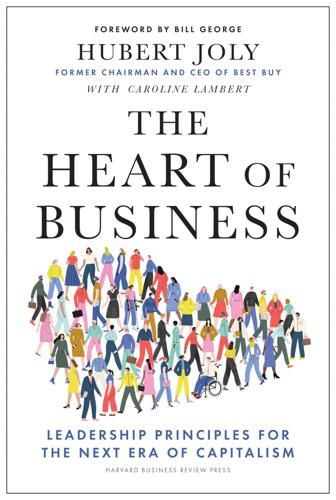
The Heart of Business: Leadership Principles for the Next Era of Capitalism
by
Hubert Joly
Published 14 Jun 2021
Companies seeking to be “the best” or “number one” play a constricted zero-sum game—and are likely one day to find themselves on the losing side. For Asheesh, the headwinds related to hardware being sold in stores were hardly out of our control. Why not just expand our field of vision to redefine our market and unlock latent demand to grow—what authors Chan Kim and Renée Mauborgne call the Blue Ocean strategy?1 Once we adopt this expansive view of markets and industries, everybody can grow. This is a much more positive perspective. Instead of obsessing about crushing the competition, companies focus on striving to be the best versions of themselves, guided by their own unique purpose and their own unique assets.
…
Rosamund Stone Zander and Ben Zander, The Art of Possibility: Transforming Professional and Personal Life (New York, NY: Penguin), chapter 3. 6. Marcus Buckingham and Ashley Goodall, Nine Lies about Work: A Freethinking Leader’s Guide to the Real World (Boston, MA: Harvard Business Review Press, Kindle Edition, 2019), 111. Chapter Thirteen 1. Chan Kim and Renée Mauborgne, Blue Ocean Strategy: How to Create Uncontested Market Space and Make the Competition Irrelevant (Boston, MA: Harvard Business School Publishing, 2004). 2. This phrase was developed by authors James Collins and Jerry Porras. Chapter Fourteen 1. Emma Seppälä, “What Bosses Gain by Being Vulnerable,” Harvard Business Review, December 11, 2014, https://hbr.org/2014/12/what-bosses-gain-by-being-vulnerable. 2.

The End of College: Creating the Future of Learning and the University of Everywhere
by
Kevin Carey
Published 3 Mar 2015
The investment and entrepreneurial games are much more contingent and fluid. It can be a fantastic rush, but it’s also a hard game to win. Metaphors and aphorisms help people transfer important ideas from one context to another. That’s why, along with Christensen, another book you’ll find on many Silicon Valley shelves is called Blue Ocean Strategy, a guide to finding and creating markets that, like open water, stretch to the horizon and are devoid of competitor boats. It’s why common wisdom in Palo Alto holds that customers are most likely to break out of their routine patterns of living and purchasing when strongly motivated, and the most immediate and powerful human impulse is the cessation of physical pain.
…
Abelard, Peter, 19, 190, 232 Academically Adrift (Arum and Roksa), 9, 85, 244 Accredible, 216–18, 248 Accreditation, 50, 58, 117, 150 ACT scores, 213 Adaptive Control of Thought—Rational (ACT-R), 101–4 Adler, Mortimer, 49 Administrative Behavior (Suppes), 78 Advanced Placement (AP) classes, 14, 15 Advanced Research Project Agency Network (ARPANET), 125, 126, 148, 205 African-Americans, 43 Agarwal, Anant, 11, 170–73, 214 Agincourt, Battle of, 98 Air Force, U.S., 186, 187 ROTC, 190 Alexander the Great, 92, 100, 226 Alexandria, Great Library of, 108 Amazon, 127, 145 American Revolution, 23 Anderson, John R., 101, 136 Andreessen, Marc, 126, 128, 205 Angell, James Rowland, 96 Anna Karenina (Tolstoy), 99 AOL, 204 Apache, 146 Apple, 126, 144, 146, 147 Argenteuil, Heloise d’, 19 Aristotle, 16, 17, 31, 44, 90–92, 95, 111, 226 Army, U.S., 90–91, 98 Air Force, 91 Artificial Intelligence (AI), 11, 79, 136, 153, 159, 170, 264n Adaptive Control of Thought—Rational (ACT-R) model for, 101–4 cognitive tutoring using, 103, 105, 138, 179, 210 Dartmouth conference on, 79, 101 learning pathways for, 155 personalized learning with, 5, 232 theorem prover based in, 110 Thrun’s work in, 147–50 Arum, Richard, 9, 10, 36, 85, 244 Associate’s degrees, 6, 61, 117, 141, 193, 196, 198 Atlantic magazine, 29, 65, 79, 123 AT&T, 146 Australian National University, 204 Bachelor’s degrees, 6–9, 31, 36, 60–61, 64 for graduate school admission, 30 percentage of Americans with, 8, 9, 57, 77 professional versus liberal arts, 35 required for public school teachers, 117 social mobility and, 76 time requirement for, 6, 22 value in labor market of, 58 Badges, digital, 207–12, 216–18, 233, 245, 248 Barzun, Jacques, 32–34, 44, 45, 85 Bayesian statistics, 181 Bell Labs, 123–24 Bellow, Saul, 59, 78 Berlin, University of, 26, 45-46 Bhave, Amol, 214–15 Bing, 212 Binghamton, State University of New York at, 183–84 Bishay, Shereef, 139, 140 Bloomberg, Michael, 251 Blue Ocean Strategy (Kim and Mauborgne), 130 Bologna, University of, 16–17, 21, 41 Bonn, University of, 147 Bonus Army, 51 Borders Books, 127 Boston College, 164, 175 Boston Gazette, 95 Boston Globe, 2 Boston University (BU), 59, 61–62, 64 Bowen, William G., 112–13 Bowman, John Gabbert, 74–75 Brigham Young University, 2 Brilliant, 213 British Army, 98 Brookings Institution, 54 Brooklyn College, 44 Brown v.
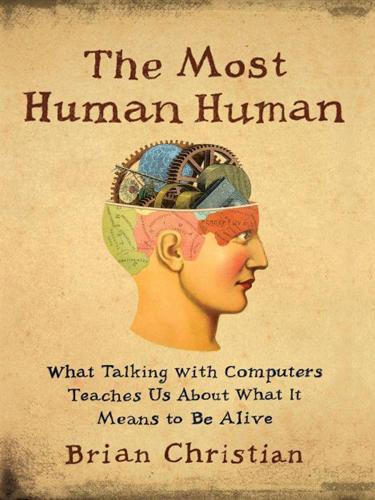
The Most Human Human: What Talking With Computers Teaches Us About What It Means to Be Alive
by
Brian Christian
Published 1 Mar 2011
Perhaps we are finally, in the beginnings of an age of AI, starting to be able to center ourselves again, after generations of living “slightly to one side.” Besides, we know, in our capitalist workforce and precapitalist-workforce education system, that specialization and differentiation are important. There are countless examples, but I think, for instance, of the 2005 book Blue Ocean Strategy: How to Create Uncontested Market Space and Make the Competition Irrelevant, whose main idea is to avoid the bloody “red oceans” of strident competition and head for “blue oceans” of uncharted market territory. In a world of only humans and animals, biasing ourselves in favor of the left hemisphere might make some sense.
…
It’s worth noting that particularly in languages like German with major syntactical discrepancies from English, where a word in a sentence of the source language can appear in a very distant place in the sentence of the target language, a purely statistical approach is not quite as successful, and some hard-coding (or inference) of actual syntactical rules (e.g., “sentences generally have a ‘subject’ portion and a ‘predicate’ portion”) will indeed help the translation software. 38 Randall C. Kennedy, “Fat, Fatter, Fattest: Microsoft’s Kings of Bloat,” InfoWorld, April 14, 2008. 39 W. Chan Kim and Renée Mauborgne, Blue Ocean Strategy: How to Create Uncontested Market Space and Make the Competition Irrelevant (Boston: Harvard Business School Press, 2005). 40 awe: It appears that articles that inspire awe are the most likely to be emailed or become “viral,” counter to popular thinking that fear, sex, and/or irony prevail online.
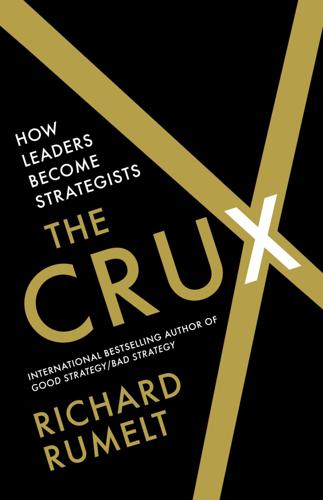
The Crux
by
Richard Rumelt
Published 27 Apr 2022
Over several months, Carl Lang developed a reasonable strategy for shifting marketing and sales efforts to smaller firms that were growing and splitting the manufacturing activities into standard and special items. My contribution was getting them to look at actual challenges instead of financial goals and generic strategies. DEDUCTION VERSUS DESIGN Carl Lang was attempting to deduce a strategy from strategy “frameworks” such as Porter’s “Five Forces” or Kim and Mauborgne’s “Blue Ocean Strategy Canvas.” But such frameworks are designed to call attention to what might be important in a situation. They do not, indeed cannot, guide one to specific actions. Others try to deduce strategies from desired performance goals, such as “grow profitably by 20 percent each year for the next five years.”
…
There is no managerial trick to make a business immortal. TOOLS LIKE CAPITAL budgeting, the BCG matrix, and disruption theory can be helpful in analyzing situations. And there are many more—value-chain analysis, willingness-to-pay modeling, multinomial logit models of competition, McKinsey’s 7S framework, the Blue Ocean Strategy Canvas, scenario development, benchmarking, product life cycle, root-cause analysis, and more. Each narrows attention to just a few factors or issue, or even just one. And each tool is built on assumptions. Ignore those assumptions at your peril. PART III Through the Crux Part I introduced the idea of challenge-based strategy and the crux.

The Personal MBA: A World-Class Business Education in a Single Volume
by
Josh Kaufman
Published 2 Feb 2011
If they discovered a way to make that espresso shot more quickly, it would reduce the time it takes to serve a customer and increase the number of customers a single store could serve in an hour. Scalable systems amplify the results of small changes. Small changes to Scalable systems produce massive results. SHARE THIS CONCEPT: http://book.personalmba.com/amplification/ Barrier to Competition Don’t compete with rivals—make them irrelevant. —W. CHAN KIM, BLUE OCEAN STRATEGY How much attention are you paying to what your competitors are doing? The more time and energy you spend following your competition, the less time and energy you have to actually build your business. Think of a company like Apple—there’s no other company in the technology world that focuses less on keeping up with what other companies are providing.
…
Bulmer CORPORATE SKILLS ▶ The Unwritten Laws of Business by W. J. King ▶ The Effective Executive by Peter F. Drucker ▶ The Simplicity Survival Handbook by Bill Jensen CORPORATE STRATEGY ▶ Purpose: The Starting Point of Great Companies by Nikos Mourkogiannis ▶ Competitive Strategy by Michael Porter ▶ Blue Ocean Strategy by W. Chan Kim and Renée Mauborgne ▶ Green to Gold by Daniel Esty and Andrew Winston ▶ Seeing What’s Next by Clayton M. Christensen, Erik A. Roth, and Scott D. Anthony CONSULTING ▶ Getting Started in Consulting by Alan Weiss ▶ Secrets of Consulting by Gerald M. Weinberg PERSONAL FINANCE ▶ Your Money or Your Life by Joe Dominguez and Vicki Robin ▶ I Will Teach You to Be Rich by Ramit Sethi ▶ The Millionaire Next Door by Thomas Stanley and William Danko ▶ Fail-Safe Investing by Harry Browne ▶ It’s Not About the Money by Brent Kessel ▶ Work Less, Live More by Bob Clyatt PERSONAL DEVELOPMENT ▶ Self-Directed Behavior by David L.

The Future of the Professions: How Technology Will Transform the Work of Human Experts
by
Richard Susskind
and
Daniel Susskind
Published 24 Aug 2015
The conduct of this work will surely attract respect and admiration, but perhaps not the excessive deference that was characteristic of mystified professional work in the past. 1 David H. Maister, Managing the Professional Service Firm (1993), p. xv. 2 As noted in Chapter 1, we take the term ‘post-professional society’ from Illich. See Ivan Illich, ‘Disabling Professions’ in Disabling Professions, ed. Irving K. Zola et al. (2000). 3 W. Chan Kim and Renée Mauborgne, Blue Ocean Strategy (2005). 4 Clayton Christensen, The Innovator’s Dilemma (1997). 5 Paul Geroski and Constantinos Markides, Fast Second (2005). 6 Philip Augar, The Death of Gentlemanly Capitalism: The Rise and Fall of London’s Investment Banks (2008). 7 Richard Susskind, Tomorrow’s Lawyers (2013), 19–22. 8 This is an updated version of the distinction between ‘automation’ and ‘innovation’ in Richard Susskind, The Future of Law (1996), 49–50. 9 Richard Susskind, Tomorrow’s Lawyers, The End of Lawyers?
…
Khan, Salman, ‘Let’s Use Video to Reinvent Education’, TED talk, Mar. 2011 <http://www.ted.com/talks/salman_khan_let_s_use_video_to_reinvent_education?language=en> (accessed 7 March 2015). Khatchadourian, Raffi, ‘We Know How You Feel’, New Yorker, 19 Jan. 2015. Kiechel, Walter, The Lords of Strategy (Boston: Harvard Business Press, 2010). Kim, W. Chan, and Renée Mauborgne, Blue Ocean Strategy (Boston: Harvard Business School Press, 2005). Kirkpatrick, Marshall, ‘Google CEO Eric Schmidt: “People Aren’t Ready For The Technology Revolution” ’ (4 August 2010) <http://www.huffingtonpost.com/> (retrieved on 23 March 2015). Kluge, Jurgen, Wolfram Stein, and Thomas Licht, Knowledge Unplugged (Aldershot: Palgrave, 2001).
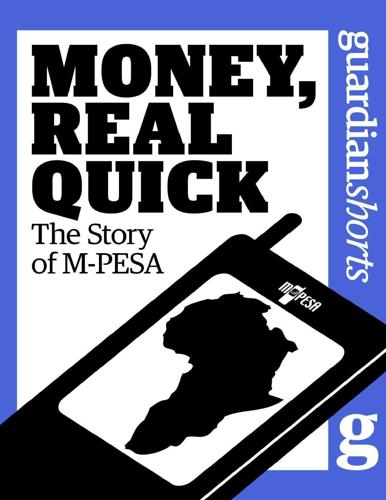
Money, Real Quick: The Story of M-PESA
by
Tonny K. Omwansa
,
Nicholas P. Sullivan
and
The Guardian
Published 28 Feb 2012
Kenyan entrepreneurs have maybe a few months, or half a year. It’s tough to iterate an idea to get the right recipe in such a short time.” Craft Silicon’s Budhabhatti feels that the Kenyan IT community is innovative, but needs more business acumen to attract investment. “We do not follow the blue-ocean strategy; we are all in the red ocean, chasing MPESA. There is a lot of innovation, but all in the same direction. “I think the question we need to ask is, Why would investors want to invest in Kenya? Just because we are innovative? Just because there is an opportunity? There are opportunities in other countries as well.

The Wide Lens: What Successful Innovators See That Others Miss
by
Ron Adner
Published 1 Mar 2012
Cooper’s Winning at New Products: Creating Value Through Innovation (New York: Basic Books, 2011). 5 72 percent of senior executives: Boston Consulting Group report, “Innovation 2010.” 5 two schools of thought: All great management books consider multiple facets of the problem but focus on different aspects. Insightful exemplars within the customer-focus school are Clayton Christensen’s The Innovator’s Dilemma: When New Technologies Cause Great Firms to Fail (Boston: Harvard Business School Press, 1997); W. Chan Kim and Renée Mauborgne’s Blue Ocean Strategy (Boston: Harvard Business School Press, 2004); Geoffrey Moore’s Crossing the Chasm (New York: HarperBusiness, 1991); George Day’s Market Driven Strategy: Processes for Creating Value (New York: Free Press, 1999); and J. C. Larachee’s The Momentum Effect (Upper Saddle River, NJ: Prentice Hall, 2008).
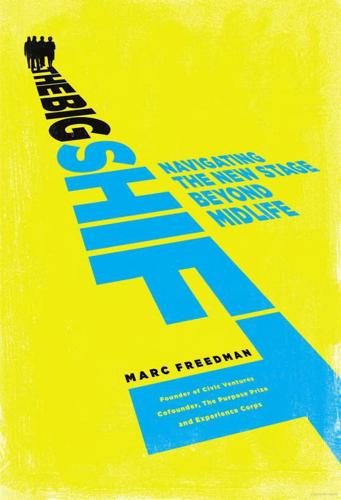
The Big Shift: Navigating the New Stage Beyond Midlife
by
Marc Freedman
Published 15 Dec 2011
Working paper, Harvard Business School, 2005. Kass, Leon R. “L’Chaim and Its Limits: Why Not Immortality?” In The Fountain of Youth: Cultural, Scientific, and Ethical Perspectives on a Biomedical Goal, ed. Stephen G. Post and Robert H. Binstock. New York: Oxford University Press, 2004. Kim, W. Chan, and Renée Mauborgne. Blue Ocean Strategy: How to Create Uncontested Market Space and Make Competition Irrelevant. Boston: Harvard Business School Press, 2005. Kotre, John. Outliving the Self: Generativity and the Interpretation of Lives. Baltimore: Johns Hopkins University Press, 1984. LaMarche, Gara. “A Third Age Bill.” Democracy: A Journal of Ideas, no. 8 (Spring 2008).

I Hate the Internet: A Novel
by
Jarett Kobek
Published 3 Nov 2016
Adeline’s next call was to Baby. Baby didn’t answer. Baby was terrible with his phone. Adeline’s next call was to Erik Willems. “I don’t grok virality,” he said. “It’s very mysterious to me and yet I’ve helped many startups based around viral content. One of the things that we try to pursue is a blue ocean strategy. What did you say, anyway?” “Haven’t you seen the video?” asked Adeline. “I don’t really care,” said Erik Willems. “I’m not that interested in the content so much as the delivery.” “Yet we’re sexually intertwined,” said Adeline. “And still you can’t be bothered to give two tosses of a tuppence?”
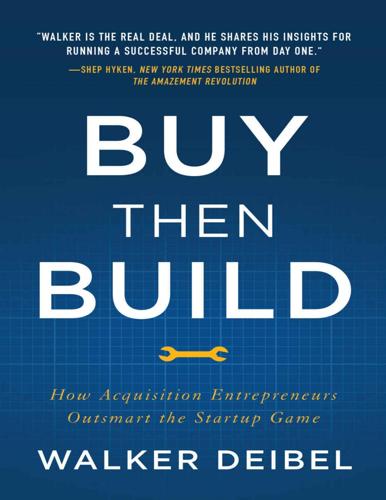
Buy Then Build: How Acquisition Entrepreneurs Outsmart the Startup Game
by
Walker Deibel
Published 19 Oct 2018
I want to highlight a few of these ideas that can help you think about taking your acquisition target to the next level. All of these examples started with understanding the business, and then accelerated or pivoted after identifying the best route to growth. Innovation paired with execution is at the core of every evolving business. BLUE OCEAN OFFERINGS The book Blue Ocean Strategies by Chan Kim and Renee Mauborgne examines the strategic business models of companies that merge two standard offerings together to form something completely unique. By doing so, companies such as Cirque de Soleil, for example, avoid the competitive and 205 bloody red waters and move into a wide-open “blue ocean” territory.

Exponential Organizations: Why New Organizations Are Ten Times Better, Faster, and Cheaper Than Yours (And What to Do About It)
by
Salim Ismail
and
Yuri van Geest
Published 17 Oct 2014
Kawasaki, G., & Welch, S. (2013). APE: Author, Publisher, Entrepreneur - How to Publish a Book, Nononina Press. Keeley, L. (2013). Ten Types of Innovation: The Discipline of Building Breakthroughs. Wiley. Kelly, K. (2011). What Technology Wants. Penguin Books. Kim, W. C., & Mauborgne, R. (2005). Blue Ocean Strategy: How To Create Uncontested Market Space And Make The Competition Irrelevant, Harvard Business Review Press. Kurzweil, R. (2006). The Singularity Is Near: When Humans Transcend Biology. Penguin Books. Kurzweil, R. (2013). How to Create a Mind: The Secret of Human Thought Revealed. Penguin Books.
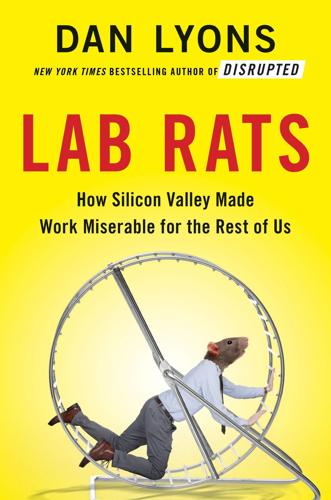
Lab Rats: How Silicon Valley Made Work Miserable for the Rest of Us
by
Dan Lyons
Published 22 Oct 2018
After Drucker and Porter came Clayton Christensen, a Harvard professor who achieved business guru status with a 1997 book, The Innovator’s Dilemma. Gary Hamel wrote The Future of Management and talked about Management 2.0. Jim Collins explained how to go from Good to Great. Renée Mauborgne and W. Chan Kim wrote Blue Ocean Strategy. If you work in the corporate world you’ve undoubtedly heard of these books. Combined, they have sold tens of millions of copies. Those gurus mostly offer advice on strategy. But over the course of the last century there also emerged new twists on Taylorism, nuts-and-bolts methodologies for speeding up production lines, reducing defects, boosting quality, and getting more work out of fewer people.
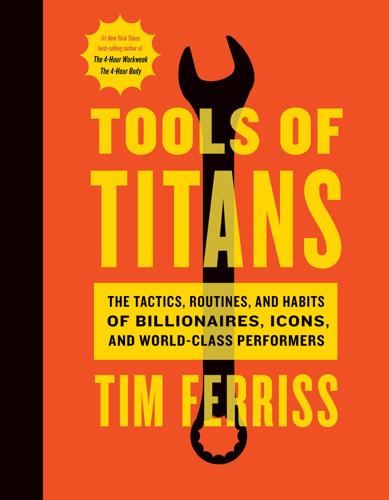
Tools of Titans: The Tactics, Routines, and Habits of Billionaires, Icons, and World-Class Performers
by
Timothy Ferriss
Published 6 Dec 2016
I had never had this sort of exposure in my life, and it completely opened up my eyes to opportunity.” ✸ Do you have any quotes that you live your life by or think of often? “Money is a great servant but a horrible master.” ✸ Most-gifted or recommended books? Think and Grow Rich, Who Moved My Cheese?, Blue Ocean Strategy, Invisible Selling Machine, The Richest Man in Babylon, and Genghis Khan and the Making of the Modern World. TF: That last Genghis Khan book has been recommended to me by several billionaires. Spirit animal: Chipmunk * * * Noah Kagan Noah Kagan (TW/IG: @noahkagan, sumome.com) was the #30 employee at Facebook, #4 at Mint.com (sold to Intuit for $170 million), and is the Chief Sumo (founder) at SumoMe, which offers free tools to help grow website traffic.
…
(Austin Kleon), The 22 Immutable Laws of Marketing (Al Ries and Jack Trout), Trust Me, I’m Lying: Confessions of a Media Manipulator (Ryan Holiday), The Rise of Superman (Steven Kotler), Daring Greatly (Brené Brown), Unlabel: Selling You Without Selling Out (Marc Eckō), Play It Away: A Workaholic’s Cure for Anxiety (Charlie Hoehn), Jab, Jab, Jab, Right Hook (Gary Vaynerchuk) John, Daymond: Think & Grow Rich (Napoleon Hill), Who Moved My Cheese? (Spencer Johnson), Blue Ocean Strategy (W. Chan Kim and Renée Mauborgne), Invisible Selling Machine (Ryan Deiss), The Richest Man in Babylon (George S. Clason), Genghis Khan and the Making of the Modern World (Jack Weatherford) Johnson, Bryan: A Good Man: Rediscovering My Father, Sargent Shriver (Mark Shriver), Man’s Search for Meaning (Viktor E.

Inner Entrepreneur: A Proven Path to Profit and Peace
by
Grant Sabatier
Published 10 Mar 2025
I love our family and our life. Last but not least, I want to thank my readers all over the world. Everything you’ve shared with me makes life so beautiful. Appendix: Further Reading These are some books that have changed my life or greatly influenced my entrepreneur journey. Entrepreneurship Blue Ocean Strategy—W. Chan Kim and Renée Mauborgne The 4-Hour Workweek—Tim Ferriss Traction—Gino Wickman 12 Months to $1 Million—Ryan Daniel Moran The Lean Startup—Eric Ries Company of One—Paul Jarvis The Minimalist Entrepreneur—Sahil Lavingia The $100 Startup—Chris Guillebeau The Personal MBA—Josh Kaufman Rework—Jason Fried and David Heinemeier Hansson The E-Myth Revisited—Michael E.

If You're So Smart, Why Aren't You Happy?
by
Raj Raghunathan
Published 25 Apr 2016
Lyubomirsky, The How of Happiness: A Scientific Approach to Getting the Life You Want (New York: Penguin, 2008). “conscious” business practices: See J. Mackey and R. Sisodia, Conscious Capitalism: Liberating the Heroic Spirit of Business (Cambridge, MA: Harvard Business Review Press, 2014). “room for everyone to grow”: W. C. Kim and R. Mauborgne, Blue Ocean Strategy, Expanded Edition: How to Create Uncontested Market Space and Make the Competition Irrelevant (Cambridge, MA: Harvard Business Review Press, 2015). 110 percent more profits: J. N. Sheth, R. S. Sisodia, and D. B. Wolfe, Firms of Endearment: How World-Class Companies Profit from Passion and Purpose (Upper Saddle River, NJ: Pearson Prentice Hall, 2003).

Strategy: A History
by
Lawrence Freedman
Published 31 Oct 2013
Michael Porter, “What Is Strategy?” Harvard Business Review, November–December 1996, 60–78. 30. Leigh Van Valen, “A New Evolutionary Law,” Evolutionary Theory I (1973): 20. 31. Ghemawat, “Competition and Business Strategy in Historical Perspective,” 64. 32. Chan W. Kim and Renee Mauborgne, Blue Ocean Strategy: How to Create Uncontested Market Space (Boston: Harvard Business School Press, 2005), 6–7. 33. Ibid., 209–221. 34. Chan W. Kim and Renee Mauborgne, “How Strategy Shapes Structure,” Harvard Business Review (September 2009), 73–80. 35. Eric D. Beinhocker, “Strategy at the Edge of Chaos,” McKinsey Quarterly (Winter 1997), 25–39. 34 The Sociological Challenge 1.